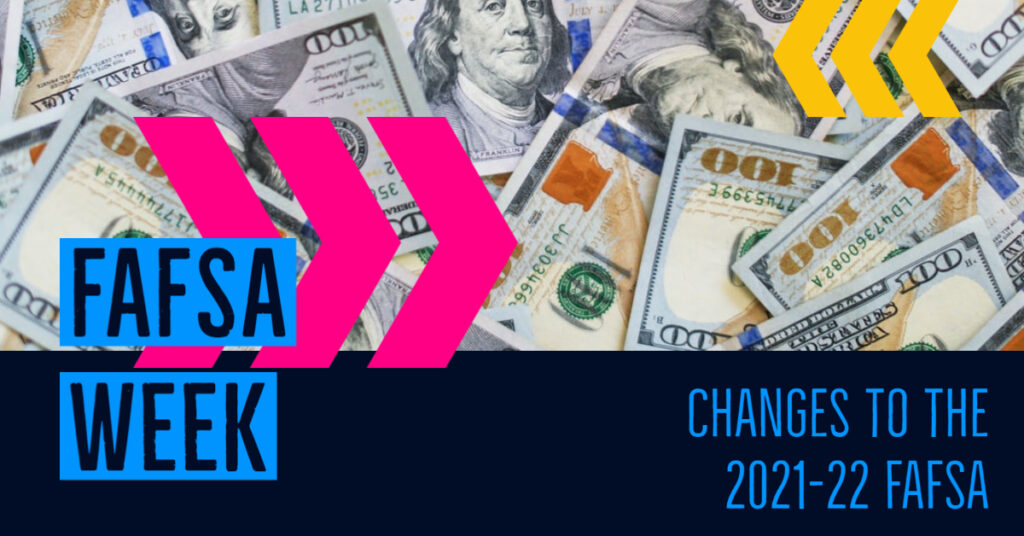
For many parents, this will be the first year you will complete the FAFSA. Since you have never completed it before, you won’t notice the changes. However, it’s important to note the functionality of the form and the functions of the mobile app.
The Department of Education (ED) released a document this month summarizing the changes to the 2021-22 FAFSA. The most notable changes are the increase of the income threshold for the automatic-zero expected family contribution (EFC) and questions asked about the Schedule 1 tax form.
The 2021–22 FAFSA changes include the following:
- The income threshold for an automatic zero Expected Family Contribution (EFC) increased from $26,000 to $27,000 for the 2021–22 award year.
- When students and parents use the IRS Data Retrieval Tool (DRT), the IRS DRT will now transfer information about whether they filed a Schedule 1. The answer will be based on all current exceptions for filing a Schedule 1. The transferred data for the Schedule 1 fields will be masked.
- For students and parents who don’t use the IRS DRT, the Schedule 1 help topics will be updated to include all current exceptions for filing a Schedule 1. “Capital Gains” has been removed as an exception and “Virtual Currency” has been added as an exception.
- Many FAFSA help topics referencing financial forms now feature images of those forms with relevant line numbers highlighted.
In early June, ED published the federal need analysis methodology for the 2021-22 award year in the Federal Register. Per Section 479(c) of the Higher Education Act (HEA), ED is required to annually adjust the income level necessary to qualify an applicant for the zero expected family contribution. This adjustment is made according to increases in the Consumer Price Index (CPI).
New functionalities in the MyStudentAid mobile app will include:
- Dashboard – Access various types of popular tasks and a personalized page to help you determine what actions to take.
- Settings – Edit/manage your account, using your username and password (FSA ID).
- Aid Summary – View your federal student loan and grant history.
- Notification Center – View and manage notifications regarding your student aid; household member and enrolled in college calculation assistance.
The paper FAFSA PDF will become available in October, and the color rotation for the paper form is green for 2021-22. FAFSA worksheets in English and Spanish will also be available.
When completing the FAFSA, even though it’s available October 1, it’s generally good to wait a week or two before filing because there will most certainly be kinks in the system–it happens. Don’t wait too long, however. With financial aid, the sooner you apply the better chances you have of snagging some of that free money!
Don’t forget to read the other articles related to FAFSA Week:
FAFSA Week: Debunking 5 FAFSA Myths
FAFSA Week: 10 Reasons to File
FAFSA Week: A Step-by-Step Guide to the 2021-22 FAFSA
